4 Medical Lines and Leads
When someone is admitted to the hospital, they are often experiencing a medical emergency, complication, or surgical procedure. The hospital has equipment to monitor patients and help them recover from surgery or illness. We will review a few of the items you may see connected to a patient.
Telemetry and Pulse Oximeter
The first items we will review are cardiac telemetry and a pulse oximeter. These items monitor the patient’s vitals during their hospital stay. They connect to a digital monitor in the room and provide information on the patient’s heart and lungs. These monitors are often disconnected during therapy.
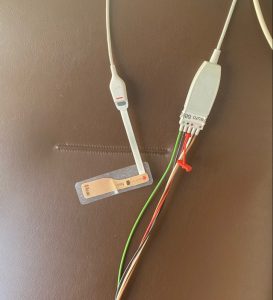
The picture on the left shows how the sensors connect to cords, which connect to the monitor that displays patient vitals. The finger probe and the ECG sensors remain connected to the patient. The therapist disconnects the sensors from the cords. In some hospitals, ECGs are monitored by team members in other parts of the hospital. The therapist must call the ECG professionals to alert them that the patient is being disconnected to work with therapy.
Below is a reference for how these devices are worn to monitor patient vitals.

Oxygen
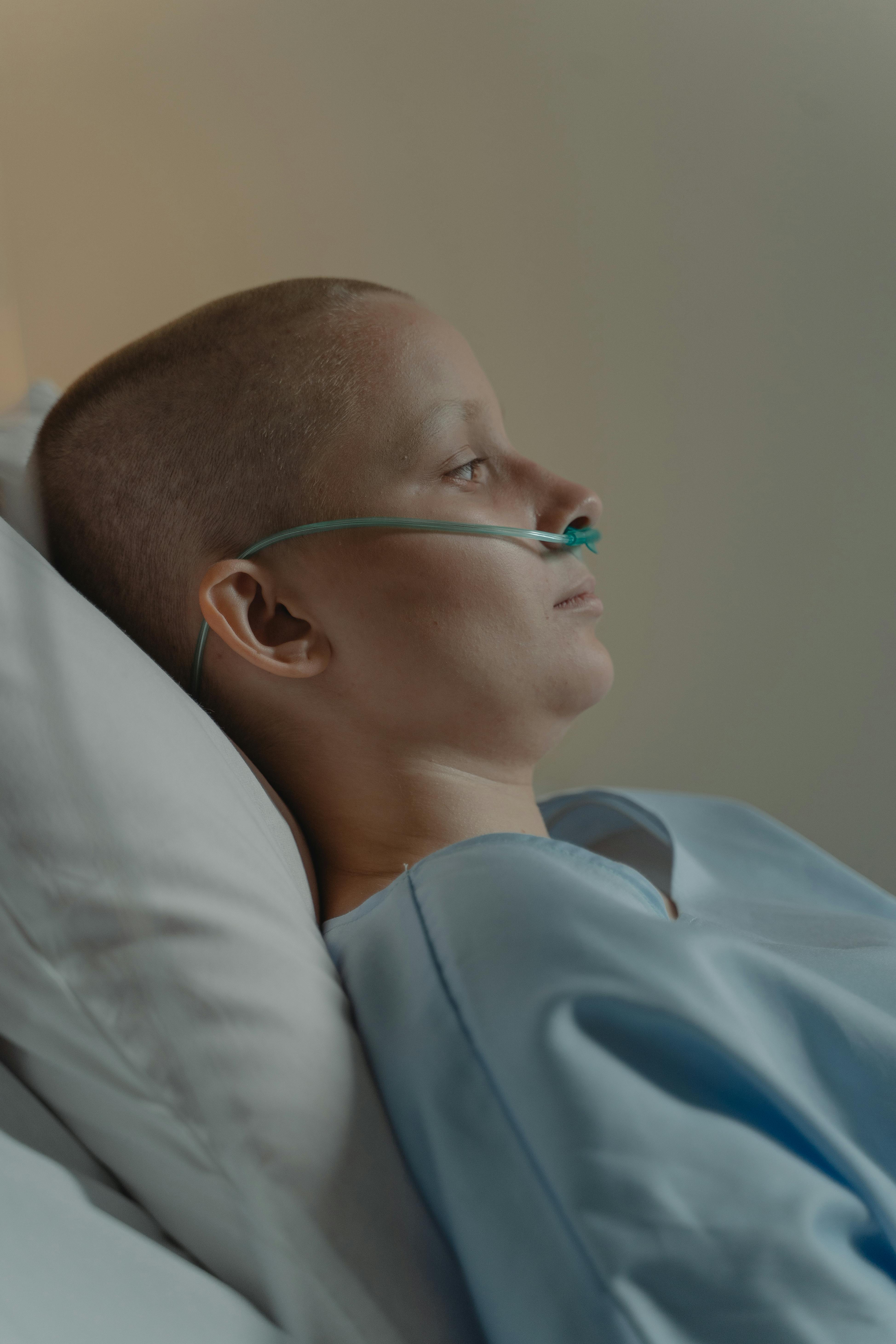
The picture above shows a patient receiving supplemental oxygen through a nasal cannula. The tubing then attaches to a gauge in the wall of the patient’s room. Patients may require extended-length tubing or a portable oxygen tank to move around the room or to venture out into the hallway.
External Catheters
External catheters are worn outside the body and connected to suction to collect urine. These types of catheters can be removed from suction by the therapist you’re working with. The version below is called a Versette and is pictured in a mesh brief that can be worn to secure the device. There is another version of the external catheter called a condom catheter that is secured around the patient’s genitals to collect urine.
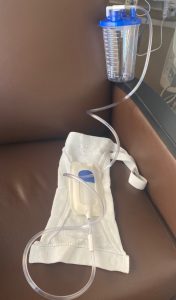
Foley (Internal) Catheter
Foley catheters are inserted into the urethra to collect urine internally. With this type of catheterization, the collection bag must be moved with the patient. There are hooks at the top of the bag to affix it to the bed or chair. When ambulating with a patient, the therapist may hold the bag or hook it to the pocket of their pants. If the patient uses a walker, the bag may be hooked to the side of the device.
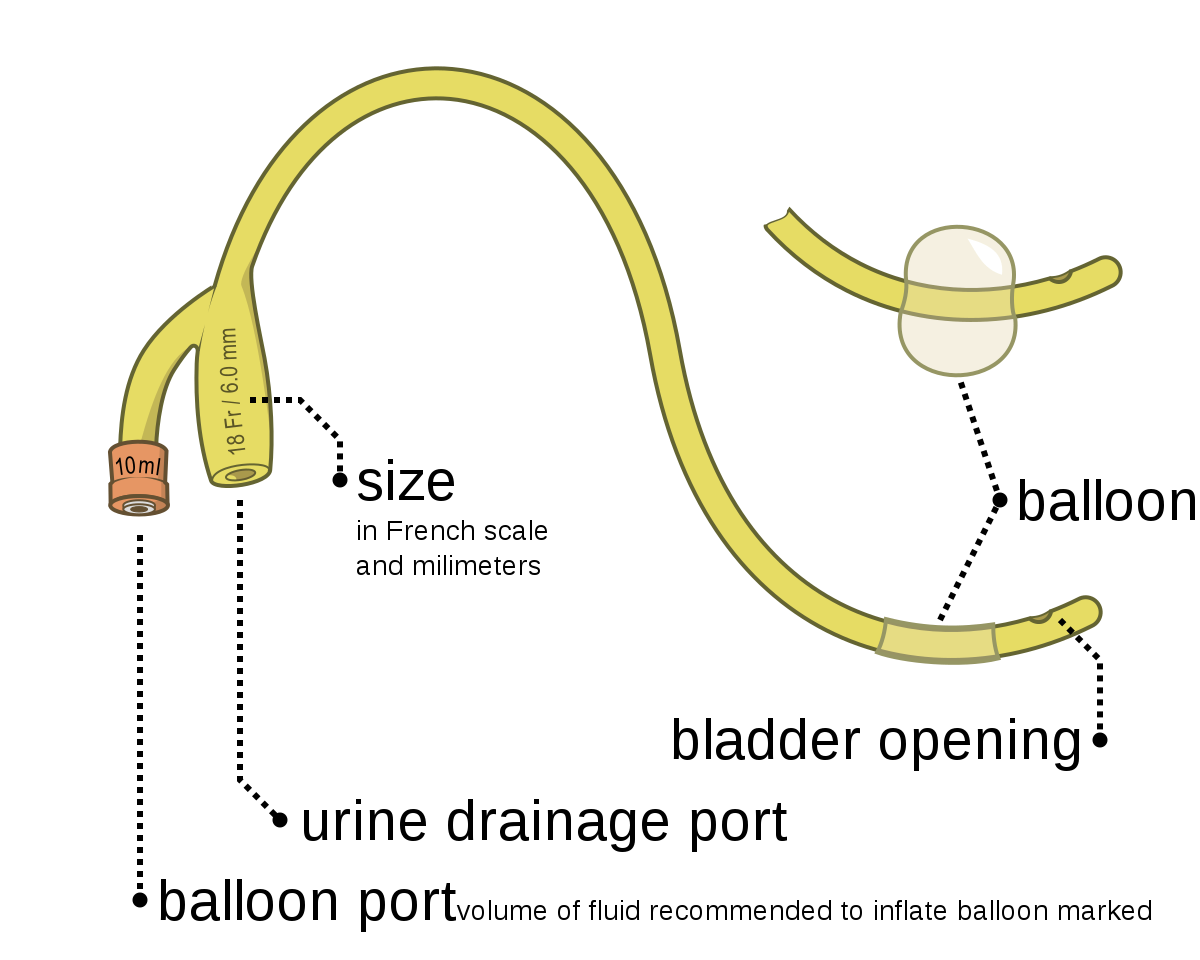

Intravenous Lines
Many patients receive medications and fluids intravenously during their hospital stay. These tubes and access sites, often called IVs, are common in the hospital. You may see various access sites, including hand, forearm, upper arm, chest, and neck. Be careful not to pull on these when mobilizing the patient. They are easily removed when tangled or tugged on. If the patient is not receiving continuous fluids or medication, their IV site may be capped, so be aware of the site during functional tasks.

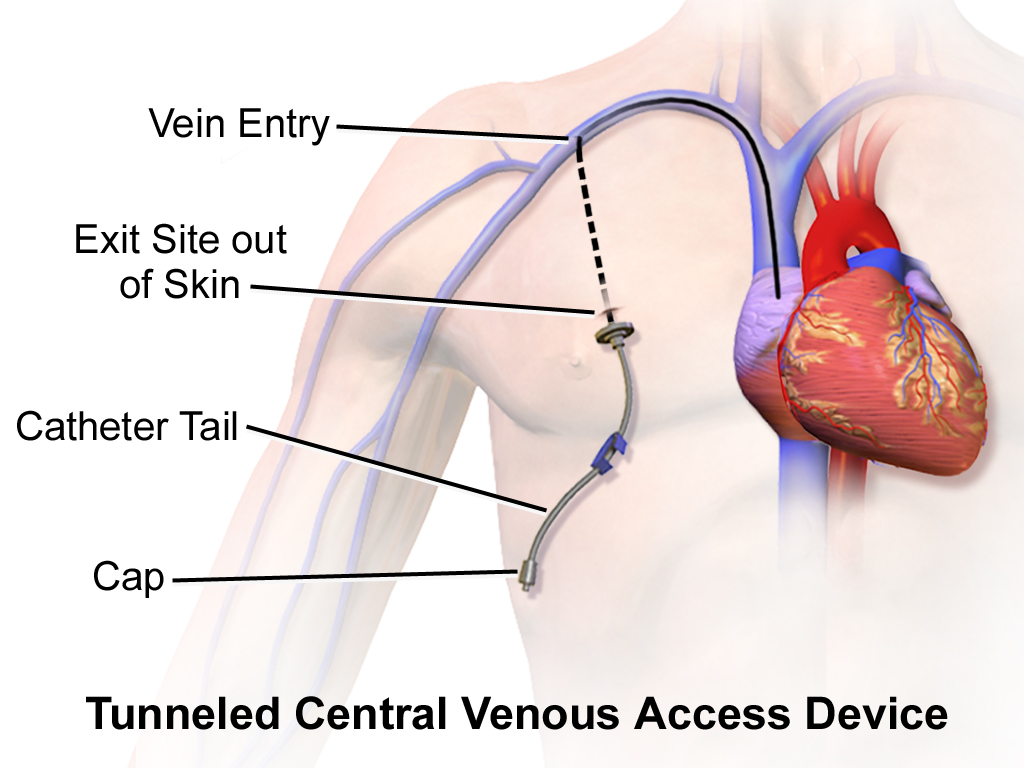
If a patient receives continuous medication or fluids, the IV sites will be connected to bags hung on an IV pole. This pole must move with the patient throughout the session. Be aware of sudden direction changes to avoid tangling the patient in their lines or pulling on their IV sites.
![]()
Feeding Tubes
Sometimes, patients require feeding tubes during their stay in the hospital. One common type of feeding tube is a nasogastric tube or NG tube. This type of tube enters the body through the patient’s nose and travels all the way down to the stomach. The NG tube connects to a bag filled with nutrient-dense formula, often hung on the IV pole. If the NG tube is connected, ensure the IV pole stays close to the patient to avoid pulling. If the NG tube is not connected to the bag, the end of the tubing may be pinned up to the patient’s gown to keep it out of the way.
If the NG tube is connected and actively delivering formula, the head of the bed must be kept above 30 degrees to prevent aspiration.

Drains

Wound Vac
Wound vacs pull fluid from a wound using low suction. They are used to reduce swelling and keep a wound area clean. The tubing inserts near the wound (typically under bandaging) and connects to the wound vac pictured below. This machine must be moved with the patient during ambulation. This device must be plugged back into the wall at the conclusion of the session.


